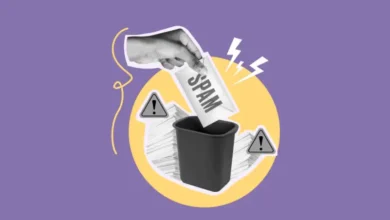In the fast-paced world of financial technology, or fintech, the appearance of error codes can be a significant disruption. One such error that has recently caught the attention of both developers and users is the “Error Code FintechAsia.” This error, associated with the FintechAsia platform, has become a topic of concern due to its impact on transactions, data processing, and overall system functionality.
This article will provide an in-depth exploration of the “Error Code FintechAsia,” including its origins, causes, implications, and solutions. We’ll also delve into the broader context of fintech error codes, why they occur, and how they can be mitigated to ensure a smoother user experience and system reliability.
What is FintechAsia?
Before diving into the specifics of the error code, it’s important to understand what FintechAsia is and its role in the fintech ecosystem. FintechAsia is a leading financial technology platform based in Asia that provides a wide range of services, including digital payments, banking solutions, and financial management tools. The platform is known for its innovative approach to financial services, leveraging cutting-edge technology to streamline processes, reduce costs, and improve access to financial services across the region.
FintechAsia supports a variety of services, including:
- Digital Payments: Enabling seamless transactions across borders with minimal fees and high security.
- Banking Solutions: Offering digital banking services, including savings accounts, loans, and investment products.
- Financial Management: Providing tools for personal finance management, budget tracking, and investment planning.
- API Integrations: Allowing businesses to integrate FintechAsia’s services into their own platforms, enhancing their financial capabilities.
Given the complex nature of the platform and the broad range of services it offers, it’s not uncommon for users to encounter technical issues or errors during operations.
The Emergence of “Error Code FintechAsia”
“Error Code FintechAsia” is an error that users have encountered while using various services on the FintechAsia platform. The error typically appears during critical operations, such as processing payments, accessing financial data, or integrating the platform’s API with other software systems.
Common Scenarios Where the Error Appears
- Payment Processing: Users attempting to send or receive payments might encounter this error, leading to transaction failures.
- API Integration: Developers integrating FintechAsia’s API with their systems might face this error during the connection or data retrieval process.
- Data Access: Financial institutions or businesses trying to access user data or financial records might be blocked by this error.
Variations of the Error
The error code might appear in different formats or with different messages, depending on the operation being performed. Common variations include:
- “Error Code FintechAsia 1001”: Indicates a failure in transaction processing due to a network issue.
- “Error Code FintechAsia 2002”: Relates to an API integration problem, often due to incorrect parameters or authentication issues.
- “Error Code FintechAsia 3003”: Linked to data retrieval failures, possibly caused by database connectivity issues.
Each variation of the error provides clues about its underlying cause, which can help in diagnosing and resolving the issue.
Causes of “Error Code FintechAsia”
Understanding the root causes of “Error Code FintechAsia” is essential for troubleshooting and preventing future occurrences. Several factors can contribute to the appearance of this error, ranging from technical issues within the platform to external factors beyond the control of the user.
1. Network Connectivity Issues
One of the most common causes of this error is poor network connectivity. Since FintechAsia relies on real-time data processing and communication between different systems, any disruption in the network can lead to failures in transaction processing or data access, triggering the error code.
- Impact: Delays in payment processing, failed transactions, and inability to access financial data.
- Solution: Ensure a stable and secure internet connection. Use tools to monitor network performance and address any connectivity issues promptly.
2. API Misconfiguration
Another frequent cause of the error is misconfiguration during API integration. FintechAsia’s API allows businesses to connect their applications with the platform, but incorrect settings, such as wrong parameters or missing authentication tokens, can result in errors.
- Impact: Integration failures, disrupted service delivery, and inability to access FintechAsia’s features.
- Solution: Double-check API documentation, ensure all parameters are correctly configured, and verify authentication details.
3. Database Connectivity Problems
FintechAsia’s operations depend heavily on databases to store and retrieve user data, transaction histories, and other financial information. Issues with database connectivity, such as server downtime or corrupted data, can lead to the error code appearing.
- Impact: Inability to retrieve or store data, leading to operational disruptions.
- Solution: Regularly maintain and monitor databases, ensure backups are in place, and address any server issues immediately.
4. Software Bugs
Like any complex software platform, FintechAsia is not immune to bugs and glitches. These can arise from coding errors, unhandled exceptions, or incompatibilities with other software systems, leading to the error code being triggered.
- Impact: Unpredictable behavior, application crashes, and security vulnerabilities.
- Solution: Implement thorough testing protocols, regularly update the software, and apply patches to fix known bugs.
5. User Error
Sometimes, the error can be caused by incorrect user actions, such as entering wrong information, using outdated software versions, or attempting to perform unsupported operations.
- Impact: User frustration, transaction failures, and potential financial losses.
- Solution: Provide clear user instructions, offer training and support, and implement validation checks to prevent common user mistakes.
Implications of “Error Code FintechAsia”
The appearance of “Error Code FintechAsia” can have significant implications for both users and businesses that rely on the platform for their financial operations.
1. Disruption of Financial Transactions
For users, the most immediate impact is the disruption of financial transactions. Whether it’s a failed payment, a delayed transfer, or an inability to access funds, these issues can lead to financial losses, customer dissatisfaction, and a loss of trust in the platform.
2. Operational Downtime for Businesses
For businesses that integrate FintechAsia into their operations, encountering this error can lead to operational downtime. This might mean delayed service delivery, missed opportunities, or a loss of revenue, particularly if the error occurs during peak transaction periods.
3. Reputational Damage
For FintechAsia itself, the frequent appearance of this error can damage its reputation. Users expect seamless and reliable service, and any technical issues that hinder their experience can lead to negative reviews, a decline in user base, and challenges in acquiring new customers.
4. Security Concerns
In some cases, the error might raise security concerns, especially if it’s related to data access or API integration. Users might worry about the safety of their financial information, leading to a decline in trust and an increased likelihood of switching to competitor platforms.
Troubleshooting and Resolving “Error Code FintechAsia”
When encountering “Error Code FintechAsia,” it’s important to follow a systematic approach to troubleshooting and resolving the issue. Here are the steps that can be taken:
1. Identify the Specific Error Code
Start by identifying the specific variation of the error code (e.g., 1001, 2002, 3003). This will provide clues about the underlying cause and help narrow down the troubleshooting process.
2. Check Network Connectivity
Ensure that the network connection is stable and secure. Use diagnostic tools to test connectivity and identify any issues that might be affecting data transmission between the user’s system and FintechAsia’s servers.
3. Verify API Configuration
For developers encountering the error during API integration, review the API documentation and verify that all parameters, authentication tokens, and settings are correctly configured. Make sure that the API version being used is compatible with FintechAsia’s current setup.
4. Inspect Database Connections
If the error relates to data retrieval or storage, inspect the database connections. Check for any server downtime, corrupted data, or issues with database queries that might be causing the problem. Ensure that backups are available in case of data loss.
5. Update Software and Apply Patches
If the error is linked to software bugs or compatibility issues, ensure that the software being used is up-to-date. Apply any available patches or updates from FintechAsia to resolve known issues and improve system stability.
6. Contact FintechAsia Support
If the above steps do not resolve the issue, contact FintechAsia’s support team. Provide them with detailed information about the error, including the specific code, the circumstances under which it appeared, and any troubleshooting steps already taken. Their technical team can offer further assistance and escalate the issue if necessary.
Preventing “Error Code FintechAsia” in the Future
Preventing the recurrence of “Error Code FintechAsia” involves taking proactive measures to address the underlying causes and improve system reliability.
1. Regular System Maintenance
Perform regular maintenance on both the user’s systems and FintechAsia’s platform. This includes updating software, monitoring network performance, and conducting routine database checks to ensure everything is functioning as expected.
2. Enhance API Documentation and Support
FintechAsia can reduce the likelihood of API-related errors by enhancing their documentation, providing clear examples, and offering robust support for developers. This can help prevent misconfigurations and ensure smoother integrations.
3. Implement Redundancy and Backup Solutions
To mitigate the impact of network connectivity issues and database problems, implement redundancy and backup solutions. This ensures that even if one part of the system fails, there are alternative pathways to complete transactions or access data.
4. User Education and Training
Educate users on how to properly use the platform, avoid common mistakes, and troubleshoot minor issues on their own. Providing clear instructions and accessible support resources can reduce the occurrence of user-induced errors.
5. Continuous Monitoring and Alerts
Implement continuous monitoring of the platform’s performance, including transaction processing, API calls, and database operations. Set up alerts to notify the technical team of any anomalies or potential issues before they escalate into full-blown errors.
Conclusion
“Error Code FintechAsia” serves as a reminder of the complexities involved in financial technology platforms and the importance of addressing technical issues promptly and effectively. By understanding the causes, implications, and solutions for this error, users and businesses can minimize disruptions, maintain trust, and continue to benefit from the innovative services that FintechAsia offers.
As fintech continues to evolve and expand, so too will the challenges associated with maintaining system reliability and user satisfaction. However, with the right strategies in place, it’s possible to overcome these challenges and ensure that errors like “Error Code FintechAsia” become rare occurrences rather than regular disruptions.
You may also read: The Pizza Edition




